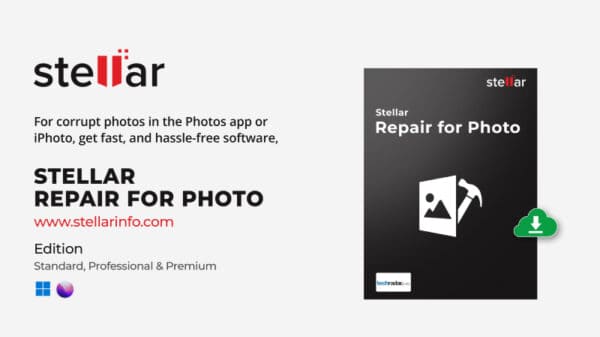Finding an application on a particular device has become an old concept to increase its broadness and accessibility for users. Now that billions of users are holding their smart gadgets all the time, businesses have an extensive scope to redesign their applications or build one across all devices.
The operating systems of each device vary, which also means that their inter-operable functions also perform differently. So, in case your application is built for a particular operating system, it wouldn’t seem possible for targeting other users due to your app’s accessibility limitations.
Now you might be thinking, ‘Is there any better option than device-specific apps?’ We are here to tell you that yes, absolutely there is! Your business can emerge with more users via Cross-Platform Mobile App Development. It is a highly preferred solution for today’s mobile app development period because these apps act like cross-device applications that are functional across every single operating system with a commonly suitable code structure.
For that reason, we are stating here some benefits of Cross-Platform App Development services that offer a range of advantages to businesses as explained further.
Benefits of Cross-Platform Mobile Apps
Lucrative and Speedy App development
Every single mobile software like Android and iOS usually requires different code structures and frameworks for the mobile development process. Nevertheless, it’s a different case in cross-platform app development.
Cross-platform apps require a single code framework that can be reused, modified, and customized as per the project requirements. Thus, it is cost-effective and a time-saving task effortlessly.
Reusable Code Template
A single code architecture needs to have reliable logic, disparate functions, and innovative themes. Moreover, it has to be system-centric to be compelling with its operations.
This is where cross-platform apps utilize data and time sufficiently. Without extracting excessive resources and developing codes, mobile app developers can reuse a framework template by just changing a few logic codes and functionalities.
Assorted Tools Available
Since cross-platform will have diversified functions, it would need specific plugins, extensions, and tools to autonomously operate the application through logic codes. Given that frameworks have useful templates, you can find suitable tools to support these functions.
For making user experience better and elevating application efficiency with tools, approach experienced mobile app development services.
Agile Application Reach
Native applications are accessible solely on particularly projected systems. However, cross-platform apps have a scope in grasping more users. As they are developed for generalized utilization, their functions cannot be distinguished due to seamless design themes and features.
Consequently, you would not need to customize the app more frequently and it will have a loading speed, engaging an enormous number of users.
How to Build a Cross-Platform Mobile App?
List out your App Requirements
As the cross-platform app will be consumed by various users from different operating systems, its functions will give a similar experience regardless of user segment. For that reason, you will have to note down a list of the relevant features according to the services offered, target classification of users, and user experience. Clarifying your requirements will make it uncomplicated for mobile app developers while building your cross-platform mobile app.
Select a Suitable Framework
For mobile app development, there are certain open-source platforms consisting of numerous archetypes and libraries. These platforms are as defined below:
- React Native: It was developed by Facebook that uses JavaScript and React. Due to its diverse range of advantages, React Native framework performed as a supportive platform for applications, making it one of the benefits of cross-platform mobile apps.
- Flutter: Flutter is one of the open-source frameworks prominently used as a UI software development kit (SDK). This framework was developed by Google for a swift development process.
- Xamarin: Originally owned by Xamarin Inc. and later acquired by Microsoft, the Xamarin framework is another open-source framework that has useful key components, tools, and APIs for high-performance applications.
- Ionic: It compiles renowned web technological usage like HTML, CSS, and JavaScript. Due to this, it contains numerous libraries and tools that are pre-built for mobile app projects.
Notably, each framework has its drawbacks but advantages. It differs from the project needs and plans blueprint.
Structure Suitable Modules
Along with framework selection, search for some reliable tools and software according to their OS compatibility. It should involve Integrated Development Environment (IDE), SDKs, code editor, and other dependent components in application-developing mechanisms. Make assurance of checking their credibility and validity.
Implement UI/UX Design
Your application design depends on its required functions and the type of users possibly affiliated with it. There are several libraries, templates, and designs provided in open-source frameworks.
The developers have to choose one of them for customization, editing, and entering logic codes from an individual codebase structure. Taking into account that the developers need to accord with the design guidelines, it can simplify their designing technique.
Customize logic codes
Applications after being deployed autonomously handle multiple user requests, and their page loading has to be optimized as per the feature accessed by the end-user. In the development process, executing and changing logic codes wherever required will improvise the user experience. Built-in APIs, plugins, and extensions assist big-time in such operations.
Test Your Application
Post-application launch, keep testing and measuring its performance. It would give an insight into errors or bugs occurring in any application area. Utilize the integrated framework’s tools and cross-platform app development services to test it on a specific period.
In Summary
Developing individual OS-based platforms seems to be a tedious job as it requires allocated time for separate systems. Moreover, it can be an expensive option for you unless there is an outcome. But, these issues can be resolved single-handedly through Cross-Platform App Development.
On the other hand, Cross-Platform Mobile App benefits will provide you with multitudinous options, and these apps can be designed innovatively as various frameworks provide a plethora of templates to structure the application in keeping with the functions of the different systems.
So to design a cross-mobile app, contact a reliable cross-platform app development service or mobile app development services.
Lucas Lagone is an expert SEO executive. Visit here: https://www.nevinainfotech.com/




















































































































































































